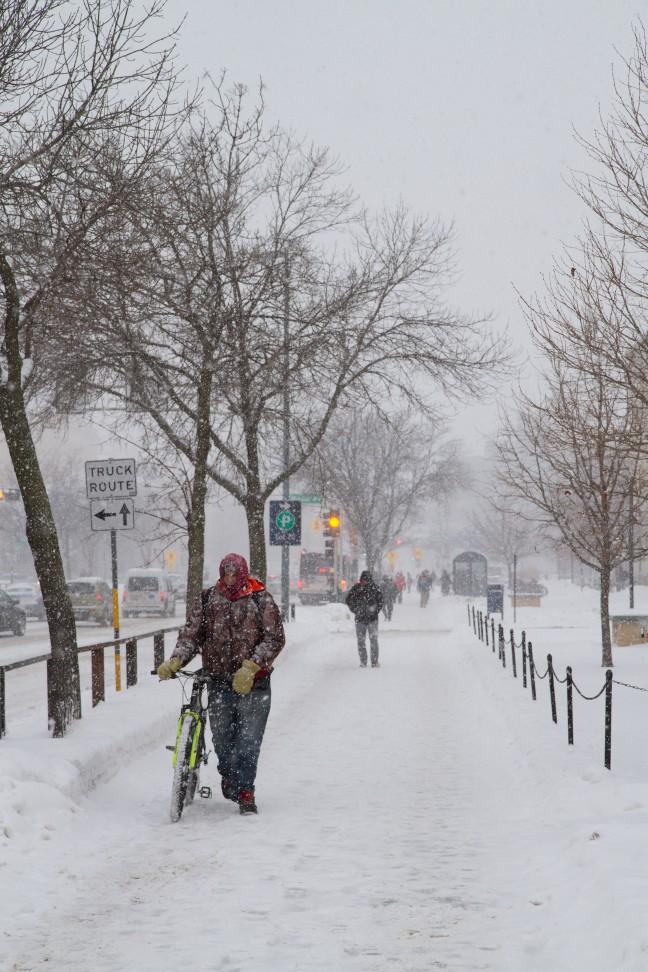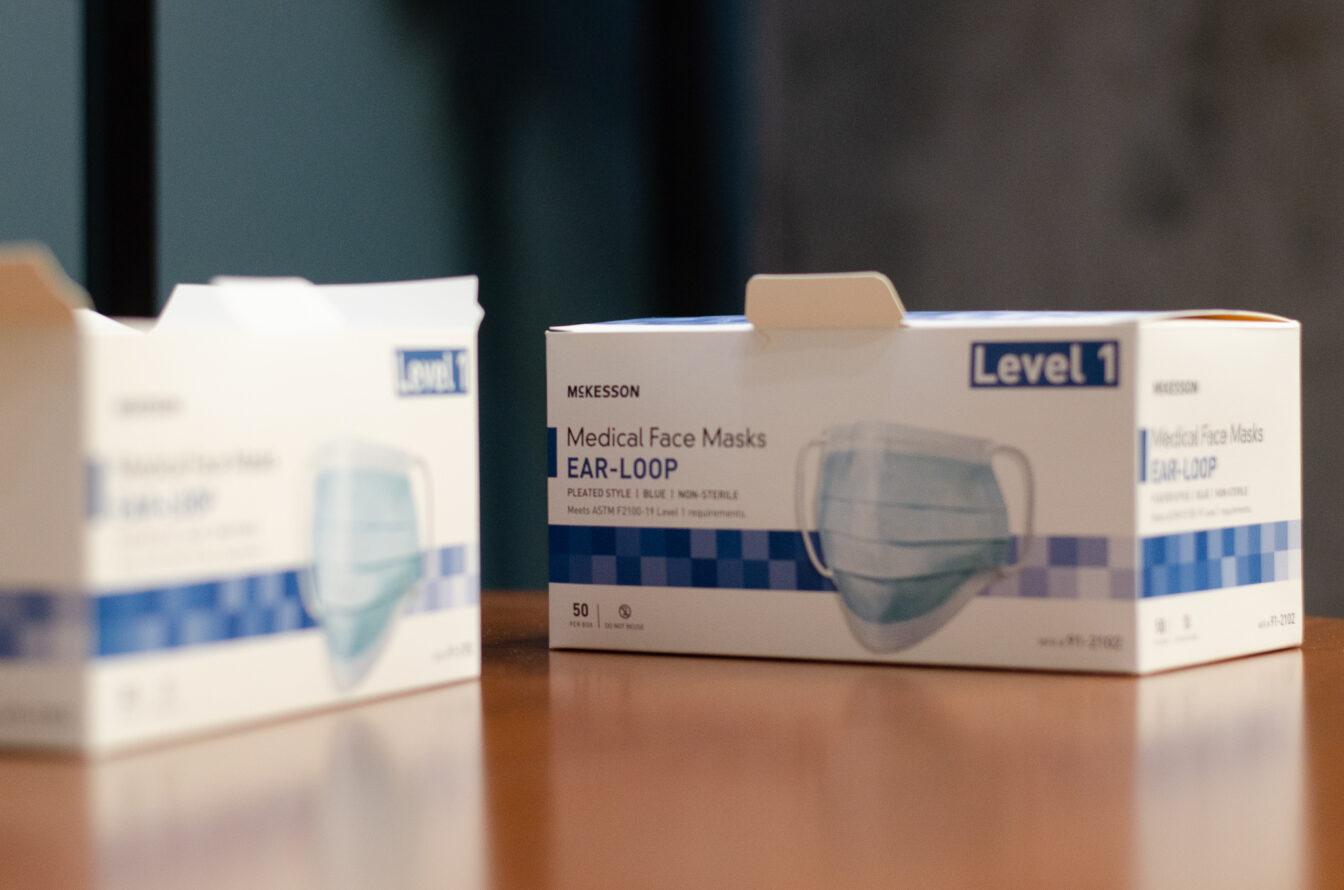Clean lakes in the summer and clean streets in the winter is what Madison wants, but the city has yet to find a solution to achieve both.
It’s an issue Madison has been trying to solve for decades, with the city implementing a salt reduction policy that has been in effect since the 1970s, according to George Dreckmann, the city’s recycling coordinator.
One of the solutions to reduce chloride contamination in Madison’s lakes and groundwater is the practice of designating salt routes, which have priority over other streets in dropping salt, Dreckmann said. These routes include main streets, bus routes and routes to schools and hospitals, which are always plowed regardless of how much snow comes down, he said.
While Madison residents may not all be aware of the policy on salt restrictions, it does not go unnoticed, Dreckmann said, as the city gets a lot of heat from residents whose streets don’t get cleared.
“People are concerned about the lakes in June, July and August and then February rolls around and people just want the snow removed,” Dreckmann said.
The city’s gameplan
The city starts preparing equipment in August, preparing to respond from November through the end of March or into April.
Dreckmann said the city plans for six general plowings throughout the season. The 2015 budget for snow and ice control sits at $6,738,878, which plans for sand, salt and other equipment, as well as overtime for city employees clearing the streets.
The city will sometimes go over its prepared budget if it is a heavy snow season, he said.
The city contracts with several private companies to prepare an arsenal of 150 pieces of plowing and salting equipment. Dreckmann said the city plans for 10 to 12 hours to clear the streets, but has been successful in finishing the designated routes in eight to nine.
Before a storm, the city will preventively spray the streets with salt brine, which overall reduces the amount of salt that gets sprayed. The brine, Dreckmann said, is basically water that is 23 percent salt and makes it easier to remove snow after the storm.
City employees who clear the snow may also be the same individuals removing the city’s waste, Dreckmann said.
“Some people will commit at midnight to clear the snow and go out into a garbage truck at seven,” Dreckmann said. “They’ll put in 16-hour work days.”
For Madison businesses, the snow can mean early closures, Mary Carbine, executive director of Madison’s Central Business Improvement District, said. She said property owners contribute to the cost for a city sidewalk snow removal service. Some businesses take advantage of weather by advertising “winter specials,” but if weather is bad enough to turn away even customers, businesses have to close, Carbine said.
Madison police are also forced to prioritize their responses during heavy storms, Joel DeSpain, Madison Police Department spokesperson, said.
“Depending on how much snow we get, oftentimes we get so many minor accidents that we only respond to those which involve injuries or road blockages,” DeSpain said. “Blood and blockage, some officers call it.”
In times of severe cold, MPD also takes on the task of ensuring Madison’s homeless get assistance in finding warm shelter. That being said, not everyone who is offered assistance wants or accepts it, DeSpain said.

Clean lakes or clear streets
Madison not only restricts which streets receive salt and how much they get, but the city is also on the front line of trying alternative solutions, according to John Magnuson, a University of Wisconsin professor emeritus in limnology. Among those alternatives, he said, are salt brine solutions and other alternatives such as beet juice.
Even sand, which comes with its own negative effects, has fewer problems than salt, Magnuson said. By using sand instead of salt, Madison is able to lower the toxicity levels.
Magnuson said the levels of chloride that have been found in wetlands around Lake Mendota at the present time are already at acute levels, according to Environmental Protection Agency standards. Acute toxicity, as opposed to chronic toxicity, is able to kill an organism in a day or two, Magnuson said.
The levels of toxicity that the city has already reached are a sign, Magnuson said, that while Madison may be progressive in its efforts to reduce road salt, it still may not be enough.
“How soon will we have negative effects? We already do,” Magnuson said. “How soon will we have drinking water issues? We already do. How long will it take before a solution comes? I don’t know.”
Dreckmann said after more than 70 years of relying on salt for de-icing, the city realizes that the chloride levels in Madison’s lakes, especially Lake Wingra, have steadily gone up. He said a growing concern is also the threat to some of Madison’s drinking water.
To counteract the primary culprit of salt from roads and sidewalks, Dreckmann said salt has been restricted from use specifically on residential streets.
Magnuson said even if the city were to end the application of salt now, salt would continue to come through the groundwater for several years. In some wells, Magnuson said, the chloride levels have reached detectable taste levels.
According to the Public Health Madison and Dane County, in 2013, 14,915 tons of salt were used, compared to 17,993 tons in 2012.
Magnuson said while Madison is taking steps in its plans to limit the levels of salt use over time, groundwater contamination from several years ago is still present.
The only way to remove salt once it has contaminated water is through reverse osmosis, a process that can be more difficult and expensive than prevention, Magnuson said.
“Truth of it is, we have a problem,” Magnuson said. “We haven’t solved it; it’s been below the radar. Clearly, the city, [the] university [and] home owners are concerned about being sued if someone falls and breaks something or runs into a tree. Those things are easy to measure. The effects on the environment are harder to measure, but we’re getting a handle on that.”














